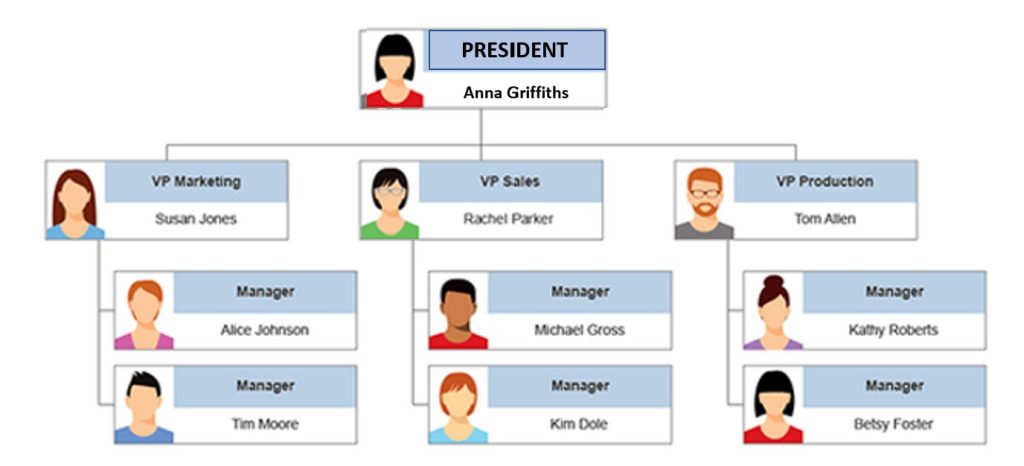28 Organizing People
People are organized in very many ways so they can live together, share knowledge, accomplish more than they could as individuals, and otherwise function effectively in today’s complex world. We will analyze how people are organized by their names, but “identifiers” that are assigned to them, and in groups of different sizes. We will also see that there are many collective nouns in the language for referring to organized groups of people.
Organizing People By Their Names
Many names began as descriptions of people based on important properties associated with them. Here are some examples in English:
- Occupations: Baker, Cook, Farmer, Fisher, Mason, Miller, Smith, Taylor, Wright
- Kinship: Johnson, Wilson, Anderson
- Appearance: White, Brown, Black
- Locations/Origin: Blackburn, Bush, Ford, Hill, Woods, Turk
Other languages do this as well. Some common German names are occupations: Bauer (farmer), Beck (baker), and Koch (cook).
Some names have been passed down through families over many generations, so today if your name is Cook you don’t have to work in a restaurant kitchen, and if your name is Woods you might live in a city and not in a forest. But your name could be a clue to your family history.
Organizing People Using Assigned Identifiers
An IDENTIFIER is a special type of name assigned in a controlled way and governed by rules that define possible values and formats. You aren’t born with these; most often, a government or company assigns them to you to distinguish you from other people.
Adults usually have many identifiers. Some examples:
- Driver’s license
- Social Security number
- Passport
- Credit card(s)
- Bank accounts
- Employee ID in a company
But even kids can have many identifiers. Some examples:
- Student ID
- Library card
- Player number on sports uniforms
Organizing People in Small Groups
People are organized in many groups; the most obvious one is the family, but there are many other types:
- Family
- Sports teams
- Scouting
- Grade, Homeroom, Classes, and Clubs in School
- Bands and Orchestras
- Church congregations
People are often organized for activities or events of short duration. When you wait in a line in a supermarket, movie theater, or airport you are organized by time of arrival, priority, or some other property test (in a supermarket, if you only have a few items you can use special check-out lines). If your class goes on a field trip, your teacher might line the students in alphabetical order to make sure that no one misses the bus.
Organizing People in Large Groups
We can also analyze how people are organized in large groups.

- Large companies organize their employees in departments or divisions according to functions, product lines, or geography and use hierarchical organization charts to communicate the “management structure” or “chain of command.” These charts help employees do their job better by clearly defining their relationships to other people in the company. (If you don’t remember the concept of HIERARCHY, take a look back at this chapter).
- This organizational hierarchy is communicated by job titles like “President,” “Vice President,” “Director,” and so on. In the army there are “Generals,” “Colonels”, “Captains,” and so on.
- We can also analyze how people are organized by their nationality (the country they live in or where they are from), by the language they speak, by their religion, by their occupations, by their political party, and so on. Here’s a chart showing the 10 languages that have the most speakers in the world:

Collective Nouns for Small and Large Groups of People
- Alumni
- Army
- Association
- Audience
- Choir
- Chorus
- Class
- Club
- Committee
- Company
- Congregation
- Crew
- Crowd
- Family
- Gang
- Jury
- Orchestra
- Party
- Posse
- Society
- Squad
- Staff
- Team
- Tribe
- Troop
- Union

